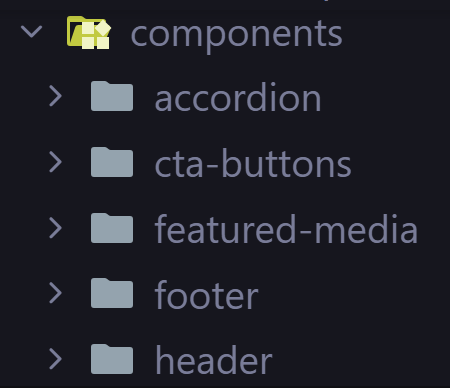Migrating from WordPress to a modern, composable digital platform
Share

This article explores how organizations can modernize their digital presence by migrating from WordPress to a composable architecture powered by Next.js and Contentstack. It outlines a structured approach to overcoming the limitations of legacy CMS implementations while emphasizing strategies that improve content velocity and user experience. The guide details a comprehensive migration framework that includes API-driven content extraction, the use of Contentstack’s CLI for repeatable imports, and the adoption of modular content blocks to enhance author autonomy. It further highlights the importance of building a centralized component library for design consistency and leveraging server-side rendering with CDN cache revalidation for optimal performance.
Overview
Modern digital experiences demand websites that are fast, scalable and easy to manage. WordPress has served countless organizations well, but as content volumes and digital demands grow, legacy implementations often reveal limits in performance, governance and developer efficiency.
A composable architecture built with Next.js and Contentstack lets teams deliver performant, secure and flexible platforms, improving visitor experience while empowering content teams to move faster.
The challenge: Moving beyond WordPress
WordPress provides a solid content management foundation, but as digital expectations increase, challenges in performance, scalability and content governance can emerge. Transitioning to a modern platform requires careful evaluation of content structures, development workflows and integration touchpoints.
A technical assessment should map content, review component usage and identify integration touchpoints. The goal: a clear, phased roadmap that reduces migration risk while aligning technology with long-term digital objectives.
Opportunities for improvement
Even with modern tools in place, there are often opportunities to enhance both the end-user experience and content workflows.
Key areas to focus on include:
Migration strategy
Extract content via the WordPress REST API as structured JSON. That content can then be mapped into purpose-built Contentstack content models that support reuse, localization, and structured delivery.
Leverage Contentstack’s CLI migration tooling for a repeatable and auditable import process. Combining the REST API with Contentstack CLI creates a reliable path from legacy content into a composable content platform while minimizing manual effort and risk.
Performance optimization with Next.js
Performance is a critical factor in user experience. Using Next.js with server-side rendering (SSR) alongside Contentstack’s Launch feature allows platforms to deliver content that is both dynamic and fast.
By pairing SSR with CDN-level cache revalidation, content stays fresh without compromising speed. This approach ensures that users experience responsive, high-performance pages while content updates remain seamless.

Centralized component library
Over time, multiple sources of components — such as custom builds or third-party libraries — can introduce complexity and inconsistency. Consolidating into a centralized, well-governed component library simplifies development, enhances maintainability and ensures a cohesive user experience.
In this model, Contentstack serves as the source of content, while Next.js manages the unified component library. This separation of responsibilities supports a scalable and modern architecture.

Adoption of modular content blocks
Traditional content and component structures may lack flexibility, increasing reliance on development resources. Introducing modular content blocks within Contentstack empowers content teams to compose pages using reusable building blocks.
Modular blocks enhance author autonomy, maintain design consistency and decouple layouts from content. This approach provides a scalable foundation, enabling rapid adaptation to new requirements and streamlined content management.
Planning for success
Creating a detailed migration plan is critical to the success of any project. Key elements to include are:
Establish a clear roadmap: Define the migration approach, including how content will be extracted, modeled, and delivered on the new platform. A structured roadmap reduces risk, provides visibility to stakeholders and keeps the project aligned with long-term digital goals.
Build a centralized component library: Consolidating UI components into a governed library ensures consistency across the digital experience while improving maintainability and developer efficiency. This makes it easier for teams to deliver new features quickly without sacrificing quality.
Adopt modular content blocks: Empower content authors by introducing modular building blocks that can be reused to assemble pages. This approach simplifies page creation, maintains design consistency, and reduces reliance on developers for routine updates.
Implement a performance strategy: Take advantage of server-side rendering and CDN-level cache revalidation with Contentstack’s Launch to ensure pages are delivered fast and updated in real time when necessary. This combination provides a balance between speed, scalability, and freshness.
Conclusion
Aligning technology with long-term digital goals is essential for building scalable, future-ready platforms. By migrating from WordPress to a composable architecture using Next.js and Contentstack, organizations can simplify content management, enhance performance and lay the groundwork for growth.
With centralized components, modular content blocks and optimized performance strategies, businesses can balance technical innovation with practical execution, creating a digital experience that is fast, flexible and designed for the future.

